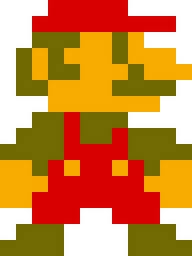Jan 29
2011
PSP2 / NGP
| The original Sony PSP was a BRILLIANT handheld console – The power of a ps2 in the palm of your hand. Though it wasn’t without it’s share of drawbacks (my thumb is still aching from that miserable excuse of an analog stick), it brought real current-generation living room gaming hardware to your pocket. (just as the game boy did for the NES, and the game gear did for the genesis), and is still my favorite pocket video game system save my iPhone 4 (mostly because the iPhone already goes everywhere with me, and the iPhone has it’s own set of gaming problems like touch-screen only tactile controls / limited control options). Don’t even get me started on how much of a complete failure the Nintendo DS was (being hugely underpowered in both cpu and gpu, it really only allowed for casual / little kid games). However, the PSP has been out for quite a few years now and is starting to get long in the tooth. |
| Enter the PSP2 or Sony codename: Next Generation Portable (NGP) (read more) |
| The original PSP used a fairly large display in the middle of what appeared to be a fairly standard controller layout of a directional pad and analog “slider” stick on the left, the 4 “shape” buttons on the right, and 2 “bumper” buttons on the top of the device for game input. As I already noted earlier, my opinion of the analog stick is pretty poor as it slid in a direction instead of rocking like a joystick. for long periods of use of the stick’s pad rubbing on the thumb it can become quite abrasive. On the PSP2/NGP they finally solved this issue by using a low-profile rocking analog joystick similar to their dualshock series (but a bit smaller), and they also added another to the device to the right side as well (as most modern video game console controllers use this layout for better 3d movement and or precision 3d camera movements). | ||
| (Original PSP) | ||
| The display on the PSP2/NGP is now a touchscreen (which is the primary mode of navigating the PSP2/NGP’s menu system) and at 5 inches looks quite a bit larger than the psp’s 4.3″ display while at the same time they decided to more-than-DOUBLE the display resolution from the psp’s fairly decent 480×272 (at 4.3 inches anyway) to a staggering 960×544 resolution. That HAS to look crispy on a 5″ display! | ||
| It looks like the UMD optical disk format used by the original PSP and PSP 3000’s has officially been deprecated (which I must say comes as no surprise as the latest model of PSP, the PSP Go is also without a UMD drive, not to mention that it’s always been rather slow and clunky), it seems to have been replaced by some kind of Sony proprietary mini flash card format, and I’m quite sure that they’ll continue to use the Playstation Network to distribute games electronically over the internet as well, though I have no idea what kind of storage options are available (internal flash? Memory Stick? perhaps something from the SD card family? Your guess is as good as mine…) but I’m sure they have some kind of storage for game saves and downloading of game, audio, and video content. | ||
| Not only does the PSP2/NGP get a proper set of real analog sticks, and a sick resolution touchscreen, it seems that Sony also integrated the same SIXAXIS accelerometer control scheme found in their PS3 controllers, which should give game developers quite a few more options, as well as front and rear cameras (which probably means some variety of video chat system is in the works, or perhaps an eyetoy style avatar snapshot kind of thing (speculation), a rear trackpad (which seems odd to me, but I’m happy to hold my reservations until I can hold it and feel the ergonomics of it for myself), bluetooth 2.1+edr (presumably for local head-to-head or Co-op gaming), 802.11 integration (which now not only features B and G but also N allowing for fast media transfer). | ||
| (PSP2/NGP back) | ||
| But the Pièce de résistance of the i/o on this new bad boy is on-board 3g cellular networking. Unfortunately, this is the part that Sony has been the most tight-lipped over, conceivably because they are still trying to nail down carriers/packages/plans etc. Though it excites me to be able to play on the internet wherever I happen to be without having to track down a public wi-fi hotspot, I’m also put-off by having to carry (and thus pay for service on) multiple cellular networking devices. I, and most others I would imagine, really only need and want 1 full-time high-speed mobile cellular device. That’s typically some variety of smartphone. If we can convince wireless carriers to upgrade their networks and give us some inexpensive unlimited data plans (AND STOP CHARGING US FOR TETHERING! WE’VE ALREADY PAID FOR THAT BANDWIDTH, WHAT DIFFERENCE DOES IT MAKE WHETHER I USE IT ON MY PHONE, MY COMPUTER, OR MY PORTABLE VIDEO GAME SYSTEM?!?!! </rant>) we can simply begin to use our phones like mobile wireless routers, enabling our other portable devices to remain connected to the internet, wherever we happen to be, over simple wi-fi. I’m personally a little up in the air about this point, but having 1 cellular device seems to be the most advantageous method of personal networking to me at this point, at least unless / until wireless carriers change their plans and do a per-person (instead of a per-device) unlimited data plan, but even from a battery perspective, it’s much more efficient to use wifi instead of cellular, so give your phone a giant battery and let your other portable devices use wifi. | ||
| The brains of the operation is a quad-core variety of the cortex A9 ARM CPU as well as a SGX543mp4 GPU which Sony says is actually on par with the PS3 hardware in terms of processing and render times. If that holds true, this is a very exciting time for portable consoles. PS3 quality processing and graphics on a pocket device is sure to be amazing! And all those agencies and centers who were building off-the-shelf PS3 supercomputer clusters just a few years ago might want to take notice and start building some small and efficient supercomputer clusters out of similar hardware. | ||
| Last, but certainly not least, one of the biggest things, in my humble opinion, that made the original PSP great and set it apart from even home gaming consoles, (and that Sony never wanted you to do) was the infinite hackability. Very Shortly after the initial release of the original PSP, kernel hackers and hardware hackers were able to open up the firmware on the PSP to enable homebrew game development, alternate-platform emulation (enabling the play of NES/SNES/genesis/game boy/other console games on the PSP), and game piracy (side note: I do not condone outright game piracy, but do *strongly* believe that you should be able to try the full version of a $40-$60 game for a few months to see if you like it before you buy it. PSA: IF YOU ENJOY A GAME, BUY IT! The artists who create the video games that you enjoy need to eat and upgrade equipment so they can continue to develop more awesome games for you to enjoy, it’s a cycle, they don’t eat, you don’t get sweet games). There isn’t (and won’t be) any word about the openness of the platform until a few months after the PSP/NGP hits the streets, but I *really* hope that hackers / DIY game developers will be able to open this thing up for even more awesome possibilities and get rid of the crappy licensing restrictions that Sony (and other console makers) have forced upon the community at large (for example, there are 0 (zero) licensed AO (adult) games available for the current generation of home consoles. there is currently a collective ban on such titles, the console makers refuse to allow game makers to release such titles on the consoles, and because of DRM concerns as well as licensing concerns it becomes impossible fore reputable game developers to create such games. I’m an adult, I should be able to access whatever legal material I choose, and I should have the option of buying such games if I’d like </rant>). | ||
|
|
||
| In conclusion: Though Sony hasn’t stated how much this thing is going to cost gamers yet, I already want one. I think it’s amazing that they crammed so many features and so much power into such a tiny hand-held pocketable device. And to Sony’s credit, this is looking like a very impressive, very worthy successor, and great evolution to the (imho) best handheld console ever. The only thing I ask is that the hackers make a swift and dedicated effort to open the platform to the levels of the original PSP so that it can be enjoyed for much more than the purposes Sony wants us to use it for. | ||
If you are interested in more preliminary information about the PSP2 / NGP, please check out these other sites:
initial CrunchGear coverage – specification information and initial impressions
additional CrunchGear coverage – Outlines additional functionality involved game studios, and has some info about possible launch titles
Engadget’s In-depth Coverage – keynote demonstration, press release, and Engadget impressions

